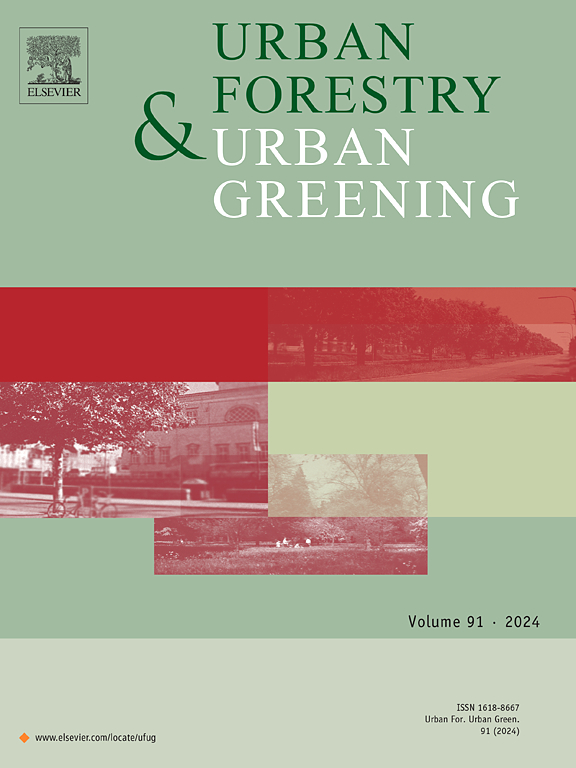从私人庭院到公共利益:人的维度如何塑造小城市的城市森林
IF 6
2区 环境科学与生态学
Q1 ENVIRONMENTAL STUDIES
引用次数: 0
摘要
管理良好的城市森林提供了许多好处,例如减少热岛效应、减少空气污染和增加财产价值。城市森林分布在整个城市,但大部分可以位于私人财产上。了解居民如何决定种植和移除树木,可以为促进城市森林的生长和保护提供信息。我们调查了548名Camrose居民对树木的态度和看法、环境态度、树木知识以及植树和砍伐行为。居民平均种植了6.0棵树,移走了2.7棵树,计算出的树木净收益为3.4棵。大多数对树木的态度和看法与植树和树木净收益呈正相关。环境态度与任何行为无关。知识与树木种植和砍伐呈正相关,但与树木净收益无关。研究结果还显示,男性、年龄、在房产中居住的时间和拥有房屋与净收益呈正相关。这些发现在一定程度上克服了小城市城市森林研究的不足,这在城市森林文献中受到的关注较少。讨论了这些发现对卡姆罗斯市的管理意义。本文章由计算机程序翻译,如有差异,请以英文原文为准。
From private yards to public benefits: How human dimensions shape the urban forest in a small city
Well managed urban forests provide many benefits, such as decreasing heat island effects, reducing air pollution, and increasing property values. Urban forests are distributed throughout cities, but large portions can be located on private property. Understanding how residents decide to plant and remove trees can inform efforts to spur the growth and protection of urban forests. We surveyed 548 Camrose residents about their tree attitudes and perceptions, environmental attitudes, tree knowledge, and tree planting and removal behaviours. Residents planted 6.0 trees on average, removed 2.7, for a calculated tree net gain of 3.4 on their property. Most tree attitudes and perceptions were positively related to tree planting and tree net gain. Environmental attitudes were not related to any behaviour. Knowledge was positively related to tree planting and removal but not tree net gain. Results also revealed that being male, being older, time living at a property, and owning a home have positive relationships with tree net gain. These findings partially overcome the lack of urban forest studies in small cities, which have received less attention in urban forest literature. The management implications of these findings for the city of Camrose are discussed.
求助全文
通过发布文献求助,成功后即可免费获取论文全文。
去求助
来源期刊

Urban Forestry & Urban Greening
FORESTRY-
CiteScore
11.70
自引率
12.50%
发文量
289
审稿时长
70 days
期刊介绍:
Urban Forestry and Urban Greening is a refereed, international journal aimed at presenting high-quality research with urban and peri-urban woody and non-woody vegetation and its use, planning, design, establishment and management as its main topics. Urban Forestry and Urban Greening concentrates on all tree-dominated (as joint together in the urban forest) as well as other green resources in and around urban areas, such as woodlands, public and private urban parks and gardens, urban nature areas, street tree and square plantations, botanical gardens and cemeteries.
The journal welcomes basic and applied research papers, as well as review papers and short communications. Contributions should focus on one or more of the following aspects:
-Form and functions of urban forests and other vegetation, including aspects of urban ecology.
-Policy-making, planning and design related to urban forests and other vegetation.
-Selection and establishment of tree resources and other vegetation for urban environments.
-Management of urban forests and other vegetation.
Original contributions of a high academic standard are invited from a wide range of disciplines and fields, including forestry, biology, horticulture, arboriculture, landscape ecology, pathology, soil science, hydrology, landscape architecture, landscape planning, urban planning and design, economics, sociology, environmental psychology, public health, and education.
 求助内容:
求助内容: 应助结果提醒方式:
应助结果提醒方式:


